
Gamification in Mobile apps
Table of Contents
TLDR
This article on “Gamification in Mobile Apps” explains how integrating game elements like points, badges, and challenges into apps enhances user engagement and satisfaction.
This approach taps into human desires for achievement and social interaction. It’s effective in various sectors, including health, education, and e-commerce, to keep users motivated and involved.
For success, it’s vital to understand the audience, test, and adapt gamification strategies based on user feedback and analytics, ensuring they align with app functionalities and user needs.
Introduction
My First Encounter with Gamified Apps
I still vividly remember my first encounter with a gamified app. It was a language-learning app, and I was initially sceptical about its efficacy. However, I was hooked within minutes of engaging with its interactive exercises, earning points, and climbing up the leaderboard. This wasn’t just a digital tool but an adventure, a challenge that beckoned me to return daily. That experience was my gateway into the world of gamification in mobile apps. This concept has since revolutionised my approach to learning languages and understanding app engagement.
Understanding Gamification: A Brief Explanation
So, what is gamification? In essence, it applies game-design elements and principles in non-game contexts. Think about those little rewards, the competitive elements, and the progress tracking that turn mundane tasks into enjoyable experiences. This isn’t just about making apps fun; it’s a strategic approach to enhance user engagement, motivation, and loyalty. Gamification taps into our innate desires for achievement, self-expression, and competition, transforming how we interact with mobile applications.
Preview of the Journey Ahead
In this article, I’ll take you through the multifaceted gamification landscape in mobile apps. We’ll explore its definition and history, delve into some successful case studies, and discuss its benefits. But it’s not all rosy; we’ll also address gamification’s challenges and criticisms. From there, we’ll dive into the best practices for designing gamified apps and peek into the future of this exciting field.
• • •
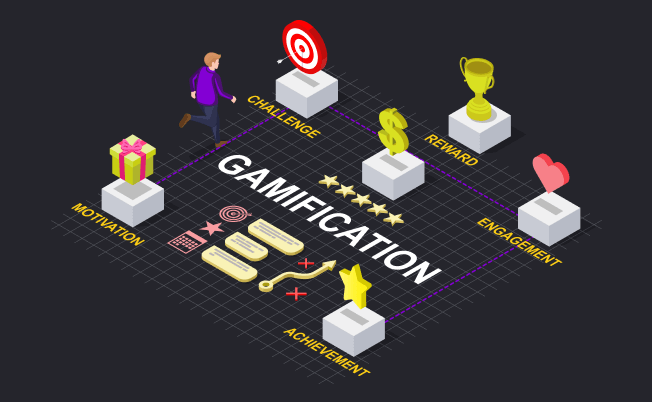
Understanding Gamification
The Essence of Gamification: Definition and Origins
Gamification isn’t just a buzzword; it’s a pivotal strategy in modern app development. At its core, gamification involves integrating game mechanics into non-game environments, like mobile apps, to motivate participation, engagement, and loyalty. This concept isn’t entirely new. Its roots can be traced back to loyalty programs of the past, like frequent flyer miles. However, “gamification” gained traction in the digital world around the early 2010s, as developers began embedding gaming elements in apps to captivate users.
A New Era in App Development
The traditional approach to app development focuses on functionality and usability – important factors, no doubt. However, gamification introduces an additional layer: engagement through entertainment and motivation. Unlike traditional apps that serve a specific purpose, gamified apps aim to create a more immersive and interactive experience. They leverage our innate love for games to make even mundane tasks enjoyable. This approach has been a game-changer, especially in education, fitness, and productivity, where motivation can be a significant barrier.
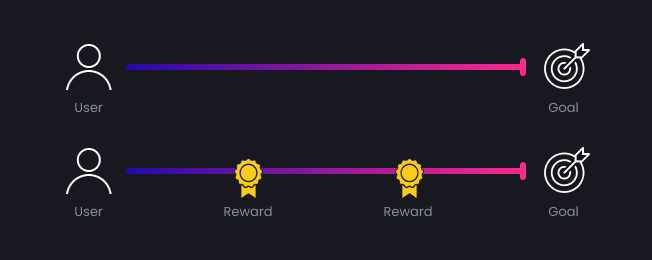
The Psychological Edge: Why Gamification Works
The effectiveness of gamification lies deeply rooted in psychology. It capitalises on our psychological predispositions towards gaming – such as the desire for achievement, competition, and social interaction. The dopamine hit from completing a challenge or earning a reward keeps us returning for more. This is why gamified apps often see higher user engagement and retention levels than their non-gamified counterparts.
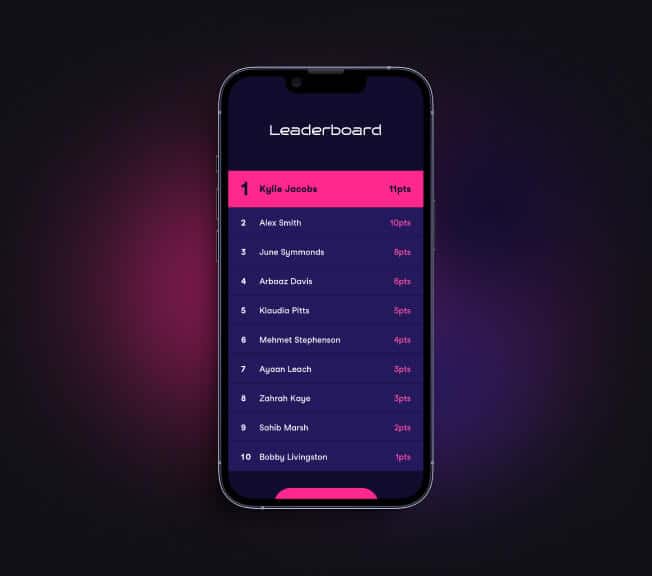
Key Elements of Gamification: More Than Just Fun and Games
The most successful gamified apps employ a variety of elements to keep users engaged. Points, for instance, quantify the user’s achievements. Badges or trophies serve as status symbols, representing milestones or accomplishments. Leaderboards fuel our competitive spirit by comparing our performance against others. Challenges and quests provide clear objectives that guide user interaction. Finally, narrative and storytelling can give users a sense of purpose and context within the app. These elements create a powerful mechanism that drives user engagement and satisfaction.
Gamification is not merely a trend; it reflects a fundamental shift in how we interact with technology. By blending the lines between play and productivity, gamification taps into our intrinsic motivations, making the experience of using apps useful and truly delightful. As we continue to explore this dynamic field, it’s exciting to think about how these elements will evolve and be utilised in future app developments.
• • •
Gamification in Action – Case Studies
The World of Gamified Success: An Overview
When we consider the impact of gamification in mobile apps, two notable examples spring to mind: Fitbit and eBay. These platforms have skilfully integrated game mechanics into their core functionalities, redefining user engagement in their respective domains. Fitbit has transformed the fitness tracking industry, while eBay has revolutionised the online auction and shopping experience.
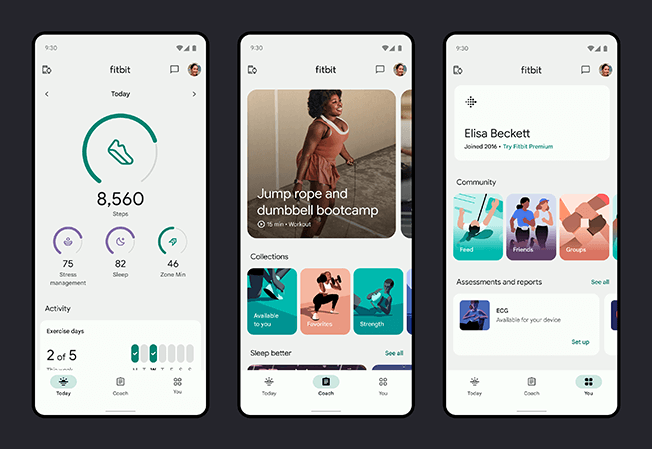
Fitbit: Revolutionising Fitness Tracking
Fitbit is a great example of how gamification can promote healthier lifestyle choices. Its gamified features include step challenges, where users can compete with friends to achieve daily step goals. This friendly competition is bolstered by real-time notifications, keeping users informed and engaged. Fitbit also awards badges for various achievements, like walking a certain number of steps in a day or climbing a set number of floors. These badges aren’t just virtual trophies; they are tangible reminders of the user’s accomplishments, fueling their motivation.
User engagement statistics for Fitbit are impressive. The platform boasts millions of active users, many of whom attribute their increased daily activity levels to the app’s gamified approach. Personally, my experience with Fitbit has been transformative. The daily challenges pushed me to be more active, and seeing my progress in real-time was incredibly satisfying. User feedback commonly highlights how Fitbit’s gamified features have made fitness tracking informative and enjoyable.

eBay: Adding Thrill to Online Shopping and Selling
eBay’s gamification strategy is more subtle but equally effective. The bidding process is gamified, with real-time updates creating a sense of urgency and buyer competition. For sellers, eBay uses a feedback score system, where higher scores and positive reviews can elevate a seller’s status. This system incentivises sellers to provide better service, enhancing marketplace quality.
The success of eBay’s gamification elements is reflected in its vast and active user base. The thrill of bidding wars and the satisfaction of achieving a high seller score keep users returning. I’ve personally experienced the excitement of participating in last-minute bidding on eBay. The anticipation of waiting to see if I’ve won an auction, often against multiple bidders, adds an engaging, competitive layer to the shopping experience.
Unpacking the Power of Gamified Elements
The gamification strategies employed by Fitbit and eBay demonstrate how incorporating game mechanics can enhance user engagement significantly. Fitbit’s approach to fitness tracking goes beyond mere data logging, creating an interactive and motivating experience. Similarly, eBay’s feedback system and real-time bidding process add excitement and accomplishment to online shopping and selling.
These case studies showcase the transformative power of gamification in mobile apps. By turning fitness tracking into a shared, competitive experience, Fitbit has motivated users to lead healthier lives. On the other hand, eBay has used gamification to make online trading more dynamic and rewarding. These examples highlight the potential for gamified apps to attract users and create lasting engagement and a strong, active community.
• • •
Benefits of Gamification in Apps
Elevating User Engagement and Retention
One of the most significant advantages of gamification in mobile apps is the remarkable increase in user engagement and retention. By introducing elements like points, levels, and achievements, apps can transform mundane activities into compelling experiences. I’ve observed this firsthand with several apps I’ve used. The allure of earning a badge or climbing up a leaderboard has often kept me engaged with an app longer than I initially expected. The key here is the psychological hook – these gaming elements tap into our innate love for challenges and rewards, making the user experience more captivating and, in turn, fostering loyalty.
Boosting Learning and Skill Development
Another area where gamification shines is in enhancing learning and skill development. Users are more likely to absorb and retain information by turning learning processes into interactive games. Educational apps like Duolingo demonstrate this perfectly – the gamified approach makes language learning less daunting and more engaging. The progress-tracking features and immediate feedback help learners understand their strengths and areas for improvement, making the learning journey more effective. This method particularly benefits visual and experiential learners who thrive on interactive and dynamic content.
Fostering Community Building within Apps
Gamification can also play a pivotal role in community building within apps. Many gamified apps encourage users to connect and compete with others, creating a sense of camaraderie and belonging. For instance, fitness apps like Strava allow users to share their achievements and participate in challenges with friends. This social aspect turns individual activities into shared experiences, building a supportive and motivated community. As someone who values the social aspect of apps, I find that this feature enhances my app experience and helps me connect with like-minded individuals.
Influencing User Motivation and Behaviour
The impact of gamification on user motivation and behaviour is profound. Gamified elements can drive users to adopt new habits, improve existing skills, or change their behaviour significantly. For instance, apps that gamify health and wellness motivate users to make healthier choices daily. The immediate rewards and recognition provide instant gratification, a powerful motivator for behaviour change. Furthermore, the sense of achievement users feel when reaching new levels or unlocking rewards can boost their self-confidence and encourage them to set and achieve higher goals.
In essence, gamification in mobile apps brings a multitude of benefits. It makes the app experience more enjoyable and contributes to higher engagement, better learning outcomes, stronger community ties, and positive behavioural changes. This innovative approach harnesses the power of gaming to create meaningful and lasting impacts on users’ lives.
• • •
Challenges and Criticisms
Navigating the Downsides: Overemphasis on Rewards and Intrinsic Motivation
While gamification in apps can be highly effective, it has its pitfalls. A significant concern is the overemphasis on extrinsic rewards, such as points and badges, which can sometimes overshadow the intrinsic motivation for using an app. For instance, in a fitness app, the focus might shift from enjoying exercise and improving health to merely earning rewards. This shift can decrease long-term engagement, as users might lose interest once the novelty of rewards wears off. From my experience, the key is to strike a balance – rewards should complement, not dominate, the app’s core purpose.
Ethical Considerations: The Fine Line Between Engagement and Exploitation
Another challenge in gamification is ensuring ethical implementation. There’s a thin line between creating an engaging app and one that exploits users’ psychological vulnerabilities. For example, apps that push users towards addictive behaviours (Gambling Apps) or encourage excessive in-app purchases (Amazon) or extreme repeat usage (Facebook) can be problematic. It raises ethical questions about the responsibility of app developers in safeguarding their users’ well-being. I firmly believe that ethical gamification should focus on enhancing user experience and providing value rather than exploiting users for profit or data.
Overcoming the Challenges: Balancing Engagement with Ethics
So, how can we overcome these challenges? The answer lies in mindful gamification. Developers must design gamified elements that align with the app’s core objectives and enhance the overall user experience without overshadowing it. For instance, incorporating rewards that are meaningful and relevant to the app’s purpose can help maintain intrinsic motivation. Additionally, limiting rewards or gamified interactions can prevent users from engaging in excessive or unhealthy behaviours.
Transparency is also crucial – users should know how their data is used and how the gamified elements function. Apps should provide options to opt out of certain gamified features if users prefer a more straightforward experience.
While gamification offers numerous benefits, addressing its potential downsides is crucial for sustainable and ethical implementation. Developers can create engaging and responsible apps by focusing on meaningful gamification that aligns with the app’s purpose and prioritising user well-being. As someone passionate about the positive potential of technology, I advocate for a balanced approach where gamification enhances rather than detracts from the user experience.
• • •
Designing Gamified Apps – Best Practices
Fundamental Principles of Gamified App Design
Designing a gamified app requires more than just adding points and badges; it’s about creating an engaging and meaningful experience. The first principle is goal alignment: ensuring the gamification strategy aligns with the app’s objectives. This alignment ensures that the gamified elements enhance the core experience rather than detract from it. Another key principle is user variability, acknowledging users’ different motivations for using an app. A one-size-fits-all approach to gamification can lead to disengagement for some users. Therefore, offering a range of challenges and rewards that cater to different user types is crucial.
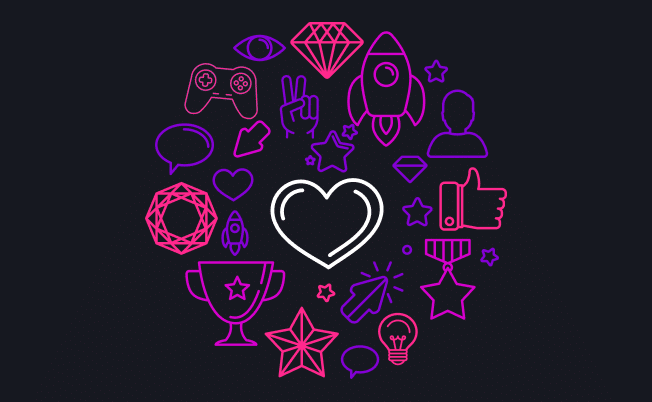
User-Centred Design: The Heart of Gamification
At the core of effective gamification is user-centred design. This approach involves understanding the user’s needs, behaviours, and motivations. For instance, in a fitness app, some users might be motivated by competition, while others might prefer personal goal setting. Understanding these nuances is crucial in designing gamified features that resonate with diverse users. Personal experience has taught me that when users feel an app addresses their specific goals and preferences, they are more likely to engage with it regularly.
Gleaning Insights from Industry Experts and Personal Experiences
Engaging with industry experts and reflecting on personal experiences with gamified apps can offer valuable insights. Experts often emphasise the importance of feedback mechanisms in gamified apps. Immediate and clear feedback on users’ actions helps them understand the impact of their behaviour, which is essential for sustained engagement. From my experience, apps that effectively communicate progress and achievement, such as through visual dashboards or personalised messages, tend to be more engaging and motivating.
Future Trends in Gamification Design
Looking ahead, I foresee several trends in gamification design. Integrating augmented reality (AR) and virtual reality (VR) is a significant trend. These technologies can elevate the gamification experience by making it more immersive and interactive. For example, an AR-based fitness app that turns a morning jog into a treasure hunt could significantly boost user engagement. Another trend is using artificial intelligence (AI) to personalise gamified experiences. AI algorithms can analyse user data to tailor challenges and rewards to individual preferences and behaviours, making the app experience more relevant and engaging for each user.
In designing gamified apps, the focus should be on creating an engaging, user-centred experience that aligns with the app’s objectives and caters to a diverse user base. Incorporating feedback mechanisms, exploring new technologies like AR and AI, and adhering to ethical design principles are key to creating successful gamified apps. As someone who has navigated the realm of app development, I believe that by following these best practices, developers can create gamified apps that are fun, engaging, meaningful, and valuable to users.
• • •
The Future of Gamification in Mobile Apps
Emerging Trends and Technologies in Gamification
As we look towards the future of gamification in mobile apps, several emerging trends and technologies stand out. Augmented Reality (AR) and Virtual Reality (VR) are set to play pivotal roles. Imagine gamified learning apps with AR overlaps historical facts on real-world locations or VR-enabled fitness apps where users can cycle through virtual landscapes. These technologies can make gamified experiences more immersive and interactive, enhancing user engagement.
Blockchain technology is another emerging trend. It could revolutionise gamification by enabling secure, transparent reward systems and digital collectables. The blockchain integration could lead to a new era of gamified apps where users earn cryptocurrency or non-fungible tokens (NFTs) as rewards, adding real-world value to their in-app achievements.
Predictions about Gamification’s Role in Future App Development
In the future, I predict that gamification will become an integral component of app development, transcending beyond just games and entertainment apps. Its application will be widespread, from educational platforms to productivity tools, healthcare, and beyond. Gamified elements will be used not just for engagement but also as a means to genuinely enhance user learning, health, and overall well-being.
We will likely see more personalised gamification strategies powered by AI and machine learning. These technologies can analyse user behaviour to tailor the gamification elements to individual preferences, thereby increasing the efficacy of these apps.
Preparing for the Future: A Guide for Businesses and Developers
For businesses and developers looking to stay ahead of the curve, it’s essential to integrate gamification strategies into their app development. This involves understanding the current gamification trends and keeping an eye on emerging technologies like AR, VR, and blockchain.
Investing in research and development is crucial. Experimenting with different gamification techniques and staying updated with technological advancements will be key. Additionally, businesses should focus on building flexible app architectures that can easily adapt to incorporate new technologies as they emerge.
User feedback will continue to be invaluable. As gamification evolves, so will user expectations and preferences. Maintaining a user-centred approach in app development will be vital in creating experiences that resonate with and retain users.
The future of gamification in mobile apps is vibrant and full of potential. As AR, VR, and AI evolve, they will open new avenues for creating engaging and impactful gamified experiences. For developers and businesses, staying informed, adaptable, and user-focused is essential to leveraging the power of gamification in this rapidly evolving digital landscape.
• • •
Conclusion
In this exploration of gamification in mobile apps, we’ve uncovered its compelling power to enhance user engagement, aid in learning, and foster community building while addressing its challenges and ethical considerations. The future, rich with emerging trends like AR, VR, and AI, promises even more immersive and personalised experiences.
My belief in the transformative potential of gamified apps remains strong. I encourage you to dive into this exciting world – whether you’re a developer, business, or user – and experience the remarkable benefits of gamification. Fusing fun and functionality in apps is not just a trend; it’s the future and here to stay.





